Stones without borders
After a month in Serbia, we're exploring the country's stone industry. As our research progressed, we realised that the material was international. We tell you all about our quest for Serbian stone...
STONE CULTURE
Louis Dutrieux
5/5/20235 min read
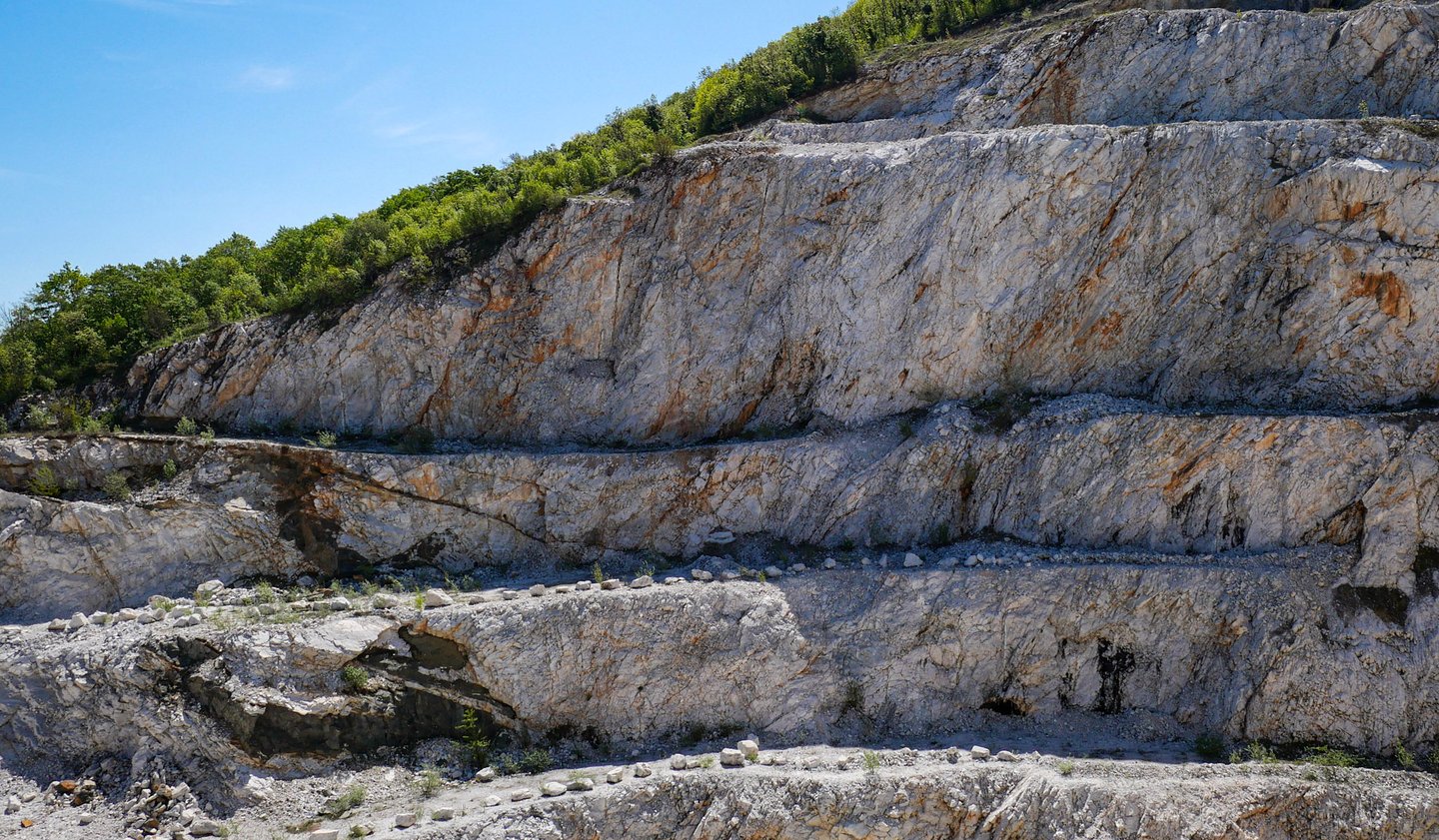

On the outskirts of Novi Sad, not far from a cemetery, we park our bikes in front of the entrance to a workshop. Marble and granite grave markers surround us. Sitting in the shade on the landing of a breeze-block hut, Zoran welcomes us. He is the boss of this small family business. After a few minutes rummaging in the back of his desk, he pulls out a thick, dusty book and hands it to us. It's a Chinese catalogue of stone products. For Zoran, there's no doubt about it: "China is where the real stonemasons are today!
We are struck by this observation. It leads us to reflect on the predominant use of imported stone in crafts in Serbia, a practice that seems evident among local artisans.
A few days later, when we arrived in Belgrade, we discovered the International Serbian Construction Exhibition¹, a must for our study. In the huge exhibition centre, numerous suppliers of machinery, equipment and materials were displaying their full-scale catalogues. Among them, around twenty exhibitors are dedicated to natural stone. In the aisles, we talk to representatives from quarries in Europe and Asia. Then, on a stand, a Serbian family business welcomed us to present the granite they extract near Belgrade. Their stone is mainly used for roadworks. They are the only company at the show offering local stone. All in all, this event gives us a further insight into the stone resources available in the country, and we can see that foreign stone is in the majority.
Where is the Serbian stone?
The investigation continues
During our stay in the capital, we also had the pleasure of meeting Andjelka, a Serbian architect intrigued by the world of stone, with whom we share our observations. She has become our point of reference for the study in Serbia and tells us about the existence of marble quarries in her native region around 80 km from the town of Aranđelovac. We therefore decided to continue our investigation in this direction for a day.
The mountain we discovered was eaten away by more than a dozen white marble quarries. As we approached, the signs "Kamenorezaç" (stone cutter or marble worker in Serbian) multiplied along the roads. On the side of the road, we see more and more blocks or stacked slabs of different types of rock, but we can't find the local white marble we're looking for. To get a better idea, we tried to access two of these quarries on foot. The quarry sites are either abandoned or inaccessible to visitors. When we saw the cameras and the huge Dumper²s on the road, we turned back. In fact, on the way back down to the village, we hear several sirens announcing a mine explosion.
By this time, we're in Alexander's workshop below. He is the third generation of marble masons in his family. His grandfather, originally from Italy, owned one of the quarries that can be seen from the workshop. But with the arrival of the socialist regime in 1945, his quarry was nationalised. In the distance, you can hear a huge explosion. Explosions like this happen several times a day," says Alexander. They didn't exist when the quarries were extracting blocks for building. Today, the rock blasted from the mountain is crushed or ground. In this form, marble is used in a wide range of industries, including metallurgy, pharmaceuticals and the food industry.
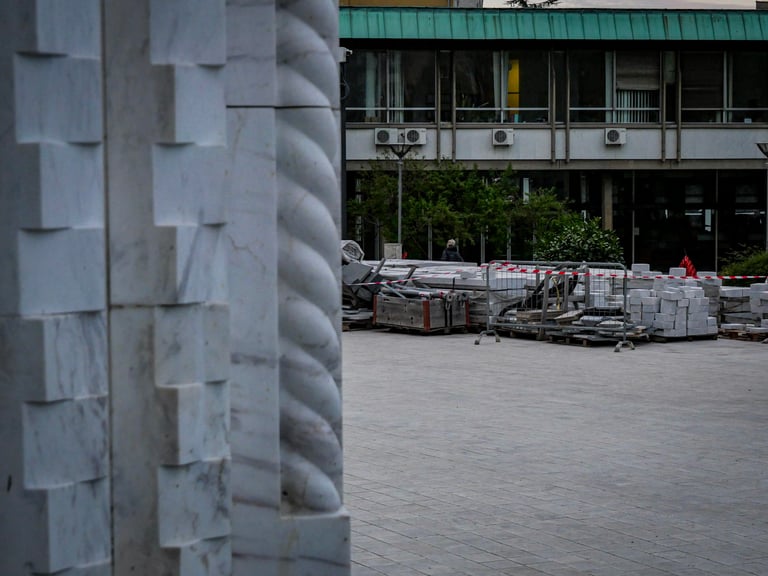
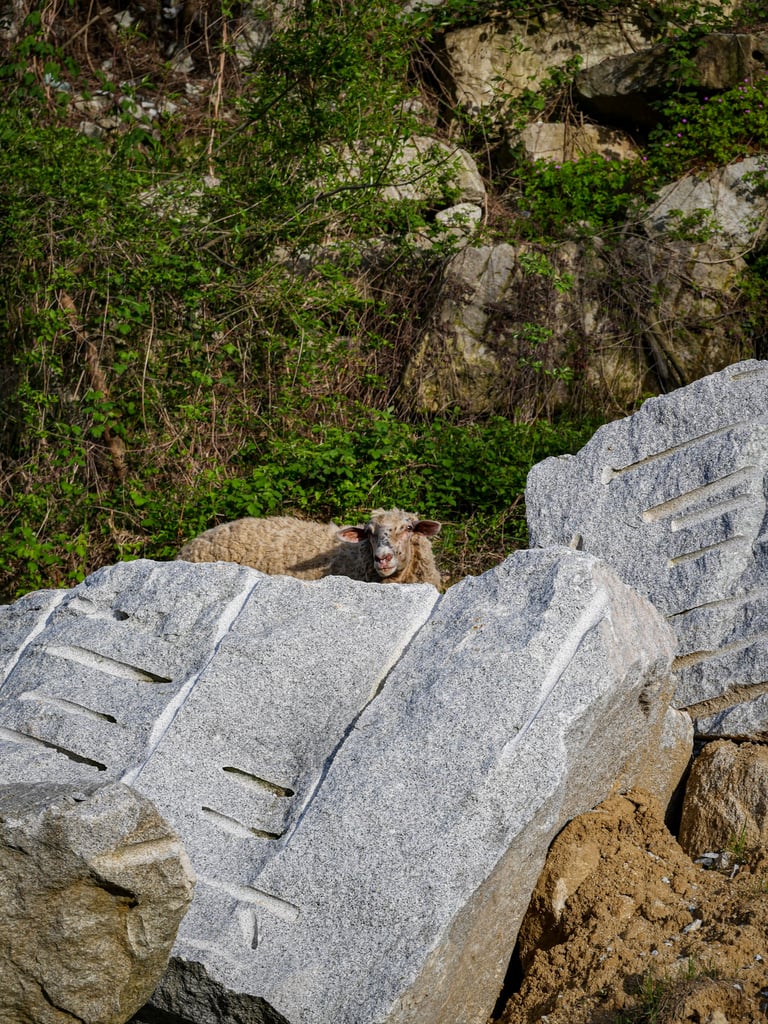

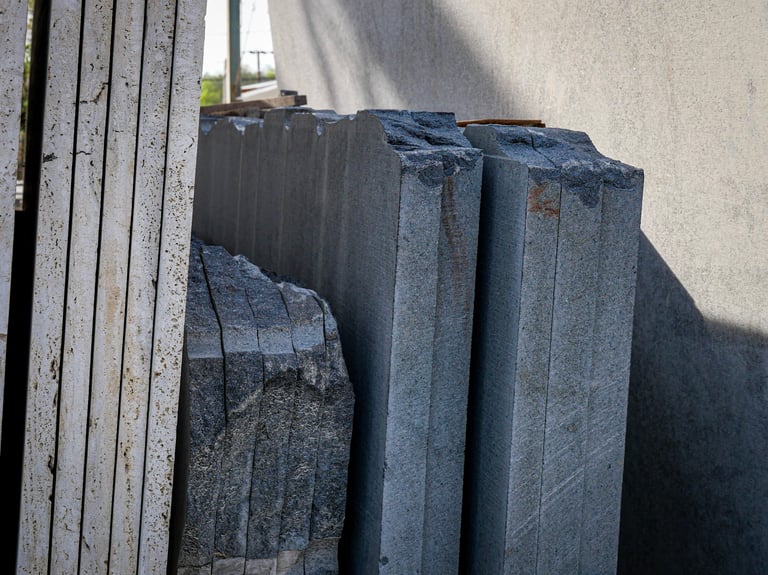
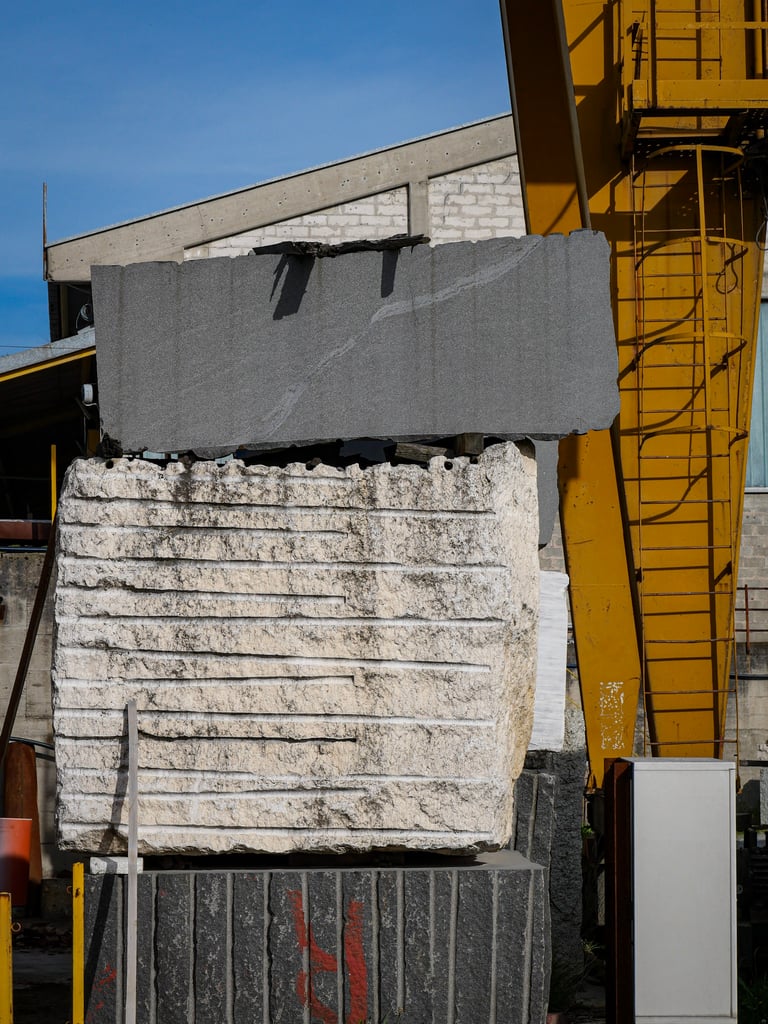







Ancient Venčac white marble quarry near the town of Aranđelovac
Do you like our post ?
Help us by offering a coffee!
Caption (from left to right):
View of Belgrade cathedral under construction
One of the portals of Belgrade Cathedral
Merchant blocks from a supplier
Serbian granit
Foreign granite slabs from a supplier
Merchant blocks from a supplier
Pallets of stones stored in Belgrade Cathedral
Children playing on white marble paving stones stored in front of Belgrade Cathedral.
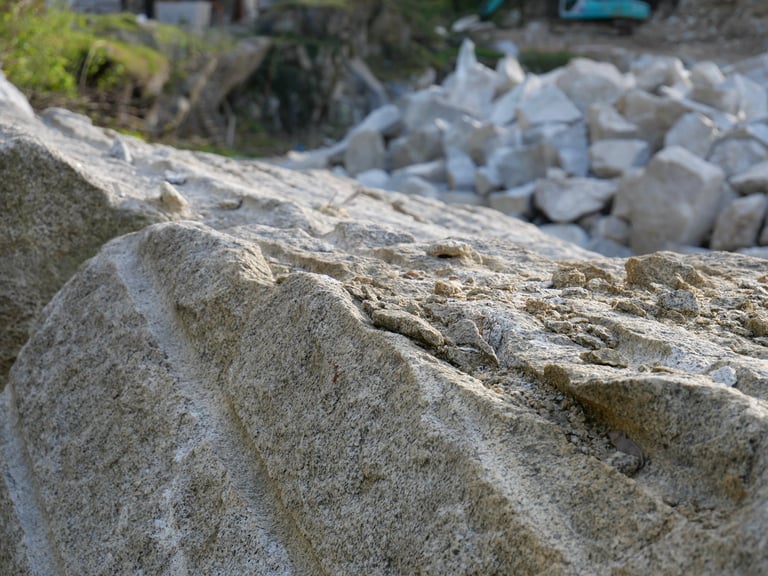

Granite quarry in Ploče, Serbia.
The tour of the workshop continues. Alexander is happy to explain every detail of the company's operations. Most of his orders are for tombstones, worktops or paving. He gives us a precise description of the qualities and origins of his stock, which consists mainly of foreign stone. These slabs, he tells us, come from a supplier a few kilometres away. So we left Alexander to go there.
Once there, merchants blocks³ of stone of all different colours and types rise up around the factory buildings. They come from all over the world. Large blocks weighing almost 4 m³ wait patiently under the overhead travelling crane⁴ before being moved and then sliced by machine in the factory. They will then be distributed throughout the country and the rest of the Balkans.
The day's exploration of this region comes to an end. As we tried to retrace the path taken by the material, from its extraction to the finished product, among all the companies we discovered, we came to the same conclusion. The Serbian stone industry appears to be closely linked to foreign imports. The use of local stone is virtually non-existent, despite the country's rich geological diversity.
At the end of the runway

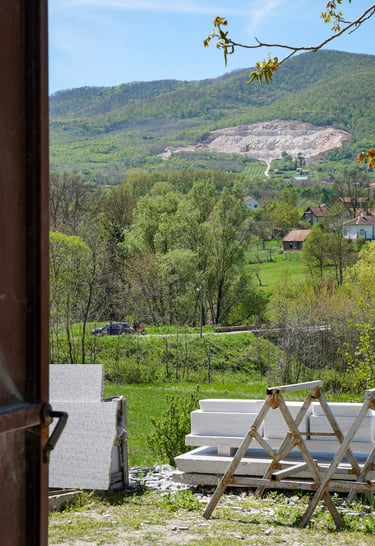
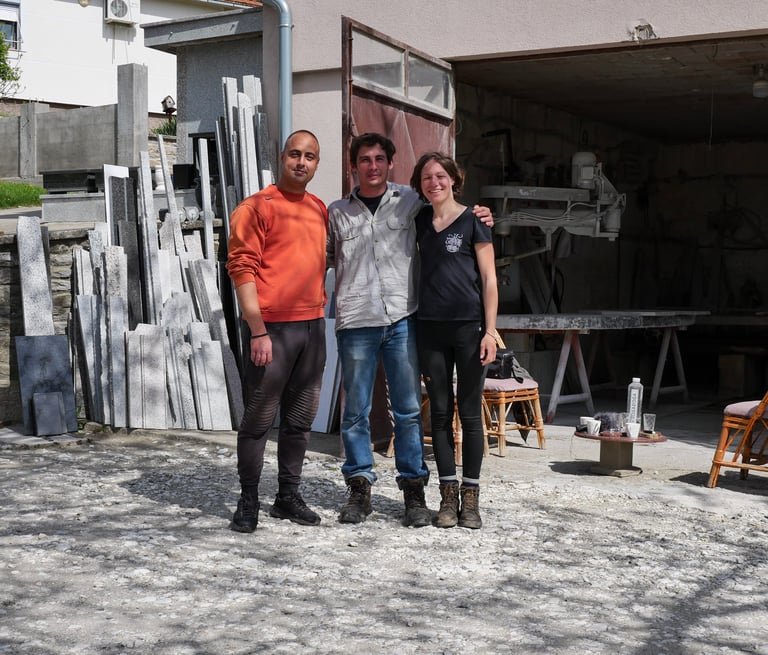

Alexander's business and a view of his stock. In the distance, the Venčac white marble quarry.
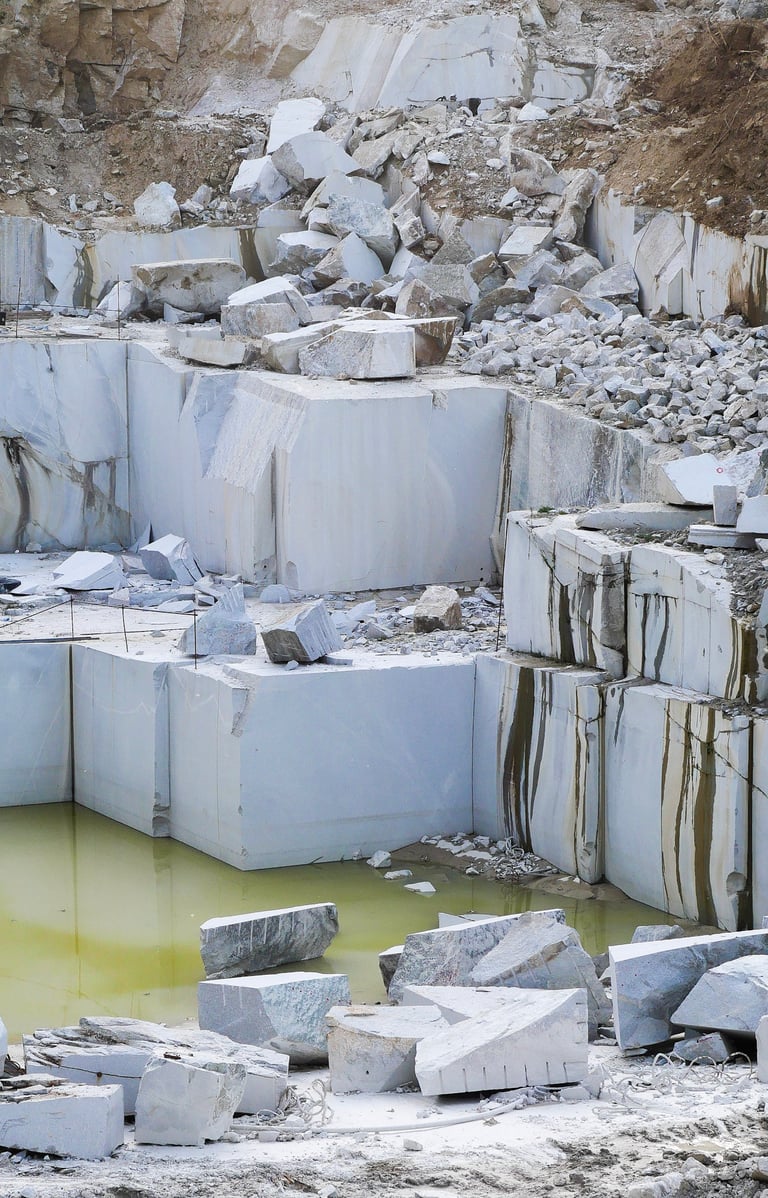

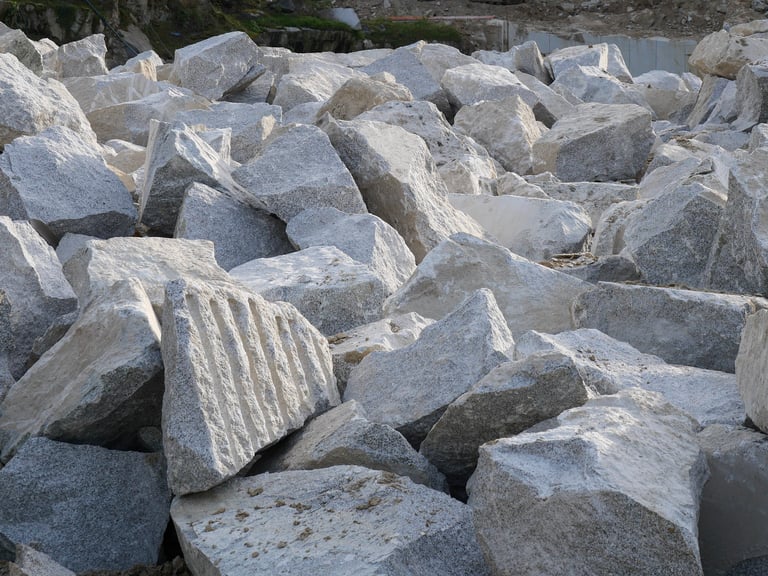

¹ The 13th Stoneexpo, Serbia's international stone exhibition, was held at the 47th Serbian International Building Exhibition.
³ Merchant blocks: rough blocks of stone quarried from the mountain.
⁴ Overhead crane: handling equipment for lifting and moving heavy loads.
Discover the other articles ...
La Route de la Pierre newspaper
Discover the other articles ...
La Route de la Pierre newspaper
Do you like our articles?




Follow the project ...
Editorial by the La Route de la Pierre team
©️La Route de la Pierre | Legal Notice | Privacy Policy | General Terms and Conditions of Sale


